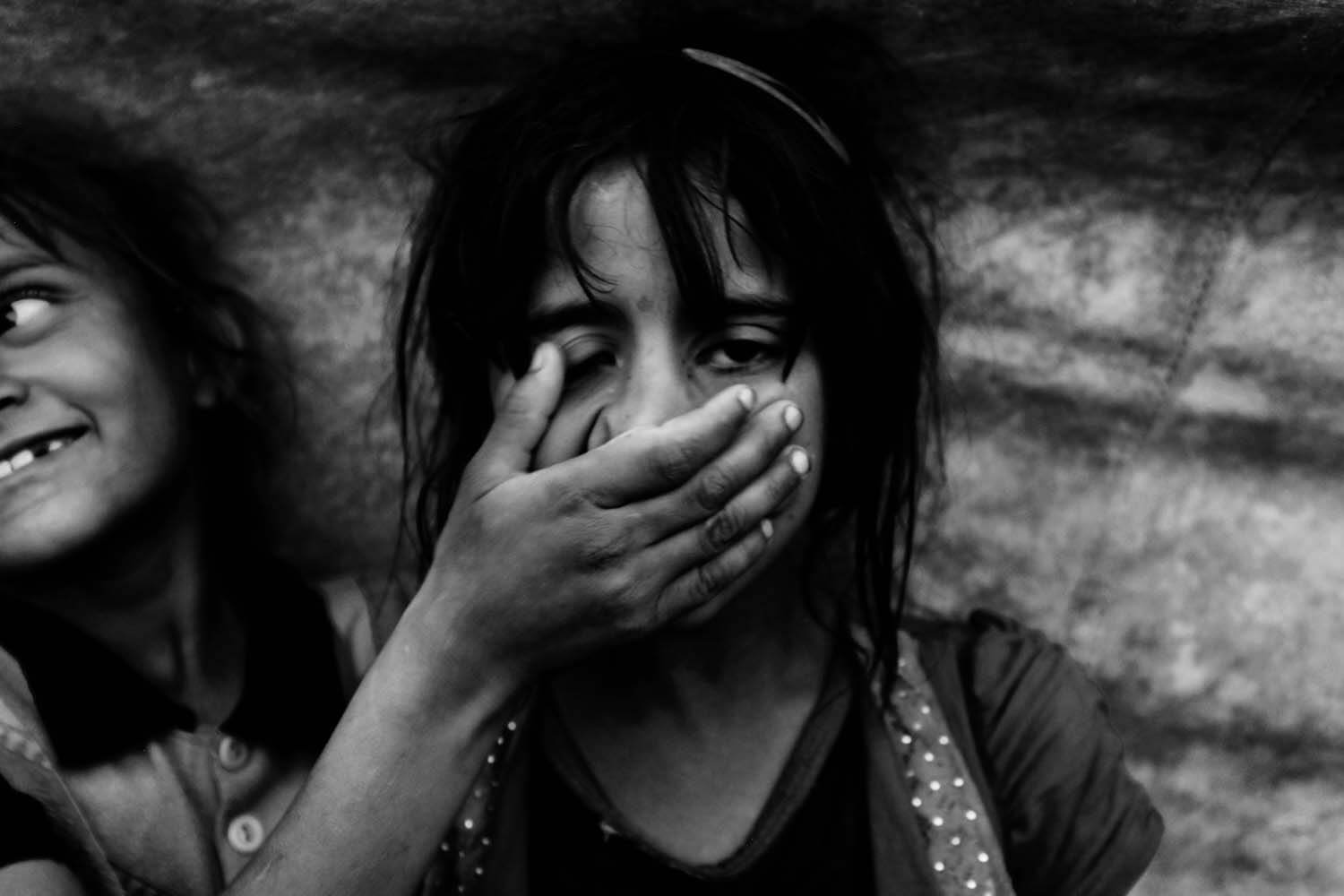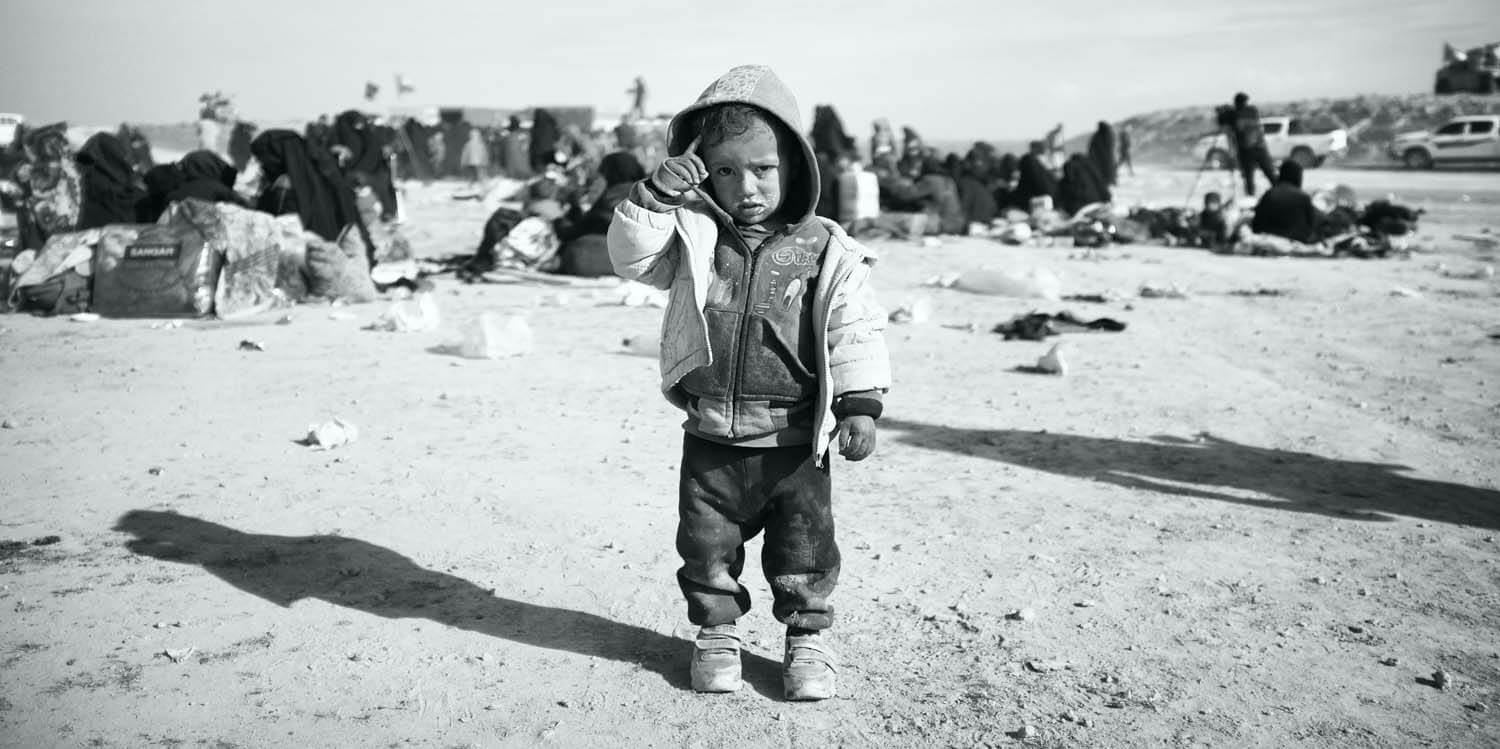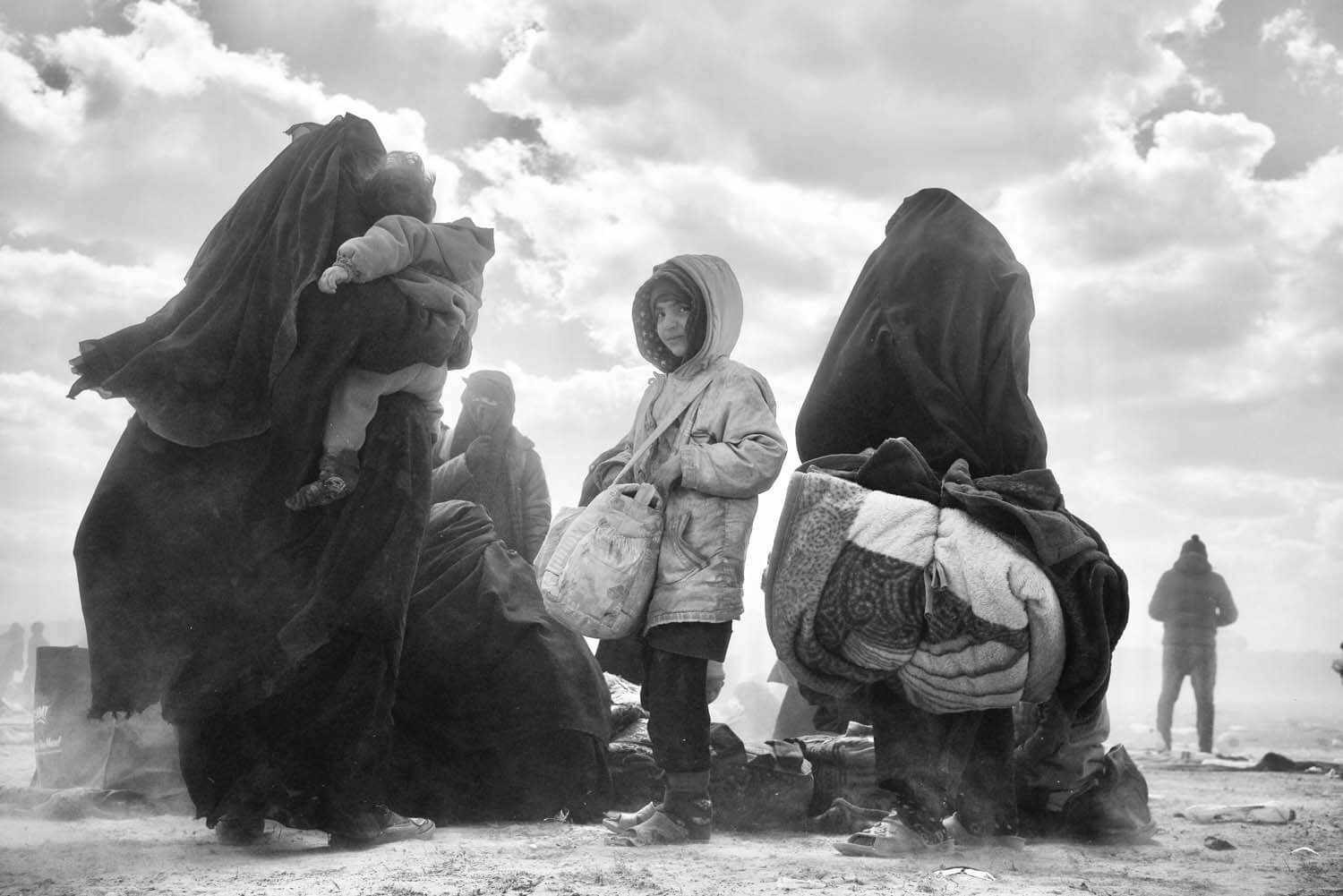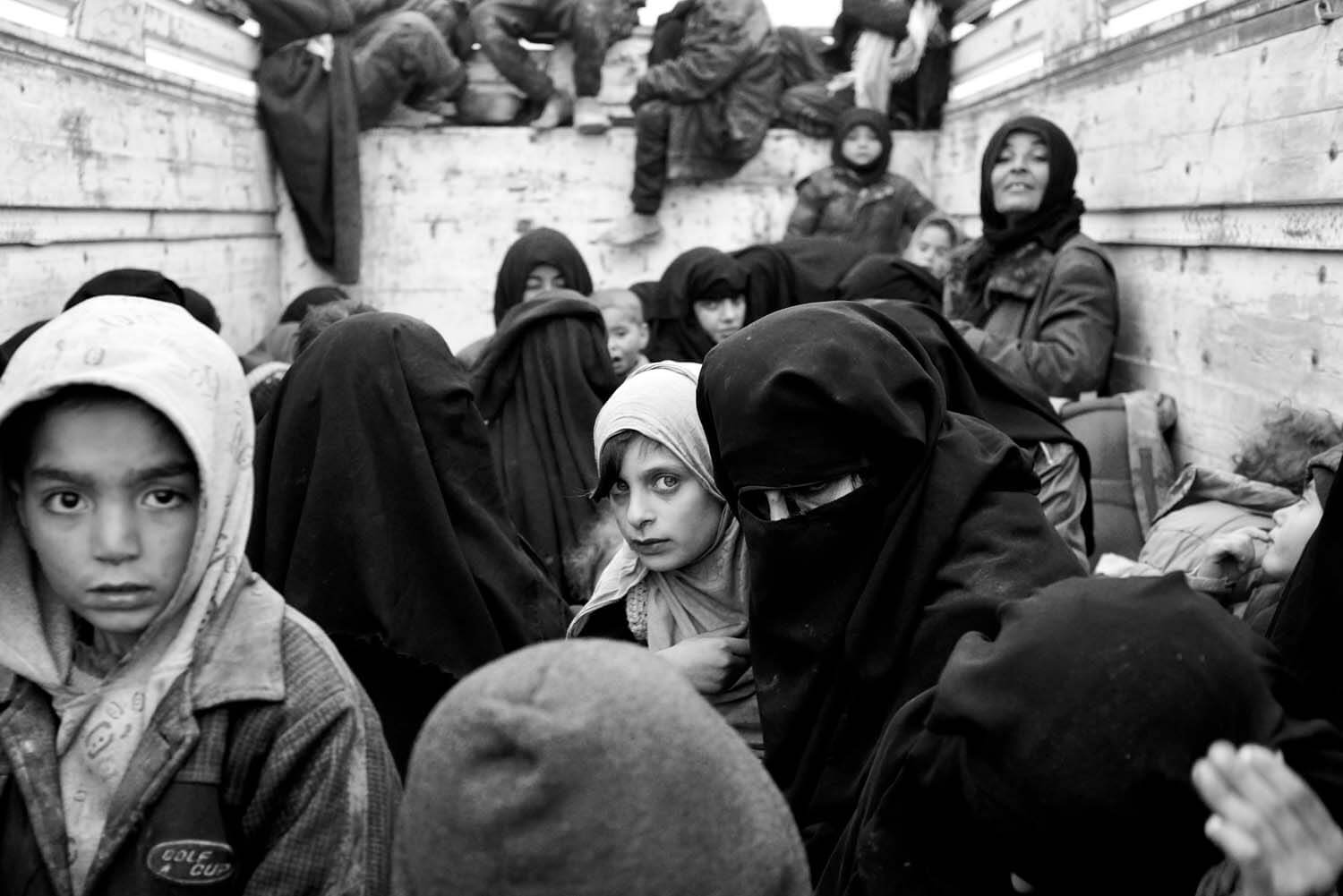Created in shadowy streaks of stark monochrome, this ex-soldier’s images unearth the adversities of contemporary warfare
Harkening back to the gloomy potency of Don McCullin’s defining works, Adam Dobby’s photographs chronicle an austere career in special service deployment. Cast in murky bands of shade, they pack the characteristic kick of conflict, yet forego the gratuity of pictures pumped into our television sets and smartphones. Avoiding the more violent facets of his practice, the pathos of these images lies in Adam’s reflective focus. They redirect our attention to the solemn expressions of his subjects, laying bare the gaze of those indelibly affected by what they’ve endured. Succinct in his observations, Adam begins our interview with a simple, yet powerful synopsis of this work. “When it comes to war, faces say so much more than bombs and corpses,” he remarks.
For nearly 30 years, Adam has served in various conflict-orientated capacities, including Britain’s elite Special Air Service (SAS), and as a security advisor for global media companies around the world. Imbued with a legitimacy seldom found in the sensationalised spheres of photojournalism, he found himself accruing a portfolio of sobering war portraits as the years went by. “I was very privileged to be selected for the SAS. The first service I saw was in the Balkans. Multiple organisations were fighting over their beliefs, religious or otherwise, and seeing it from a soldier’s perspective provided me with amazing access,” he recounts. “We were trying to define the lines between right and wrong, but inevitably became tools of certain agendas. I think that shaped me. It propelled me to view conflict from the other side of the coin.”
Photos 2021 © Adam Dobby | FUJIFILM X100S camera, Syrian Desert, Syria. A family escapes ISIS, following the battle of Baghuz Fawqani | FUJIFILM X100S camera, Syrian Desert, Syria. Taken from the back of a cattle truck. 50,000 ISIS refugees handed themselves over to the Syrian Democratic Forces in the aftermath of fighting at Baghuz Fawqani.
Like the rest of the world, Adam was occupied by a more introspective mindset at the onset of the pandemic. It was the quietness of the early phases that allowed him to properly ponder his career, and ultimately decide to share his photographs with the world. “When Covid-19 hit, I started reflecting upon all the wars I’ve been involved in over the years. I was fortunate enough to visit these places; I literally saw history unfold before my eyes. Initially, I had no intention of showcasing any of this material. But then lockdown happened, and my friends encouraged me to exhibit. If I can educate with the images I’ve captured, why wouldn’t I? I felt it was necessary to get the public to engage with these wars without the rhetoric of news.”

Photo 2021 © Adam Dobby | FUJIFILM X100S camera, Baghdad, Iraq. One of the many UNHCR camps, providing support to children with mental and psychological trauma.
Foregrounding a more humanist direction, Adam turned his FUJIFILM X100S to the faces of those caught in the clutches of unimaginable struggles. “I think using portraiture lends the images more gravitas. You have to think about the emotions of those presented in the frame.” Layered and complex, it’s perhaps Adam’s focus on youth and childhood that reinforces this message, instilling his photos with an innocence that counterpoints the devastation of surrounding environs. The results are poignant and absorbing. “There’s definitely a thread that runs through all my images. They are, for the most part, centred around children. They’re born into these worlds, in such disastrous situations, and I wanted to leave them with a memory they weren’t accustomed to. All they know is war. I built up a sense of rapport, which would in turn break down barriers and aid communication,” Adam outlines. Delineating these bonds as an essential part of the process, he continues by describing a kind of domino effect – one that emerges from this place of solidarity, and grows outward. “Once you’ve established a sense of trust, it expands. But beginning with the children was paramount. That was how I wanted to approach these stories. Of course, it was often very hard, because some of these kids are so badly affected by what they’ve been through. Certain photographs were taken of children who were completely mute. They couldn’t communicate… even their eyes were glazed over.”

Photo 2021 © Adam Dobby | FUJIFILM X100S camera, Fallujah District, Iraq. Two young girls play in a tented refugee camp, following the battle of Fallujah.
Battered and beaten, Adam’s X100S has been his trusted tool throughout exceptional circumstances. Affectionately dubbed his ‘little beauty’, he speaks to the camera’s versatility and longevity. “A good friend of mine introduced me to Fujifilm about 10 years ago. He recommended I invest in this.” Adam lifts his dog-eared rig to the webcam for inspection. “It’s small, but more importantly, it’s inconspicuous. If you put a DSLR in the faces of these kids, they’re fearful of it. This camera has the opposite effect. It doesn’t draw attention to itself. It’s also massively robust.” For eight years, he’s formed something of an attachment to his equipment. “This thing has been in various close shaves with me, and still operates like a dream. Even if I was offered the most sophisticated camera on the market, I’d be reluctant to part with it.”

Photo 2021 © Adam Dobby | FUJIFILM X100S camera, Idlib Governate, Syria. A young man who lost his parents in the battle for Aleppo. An estimated 31,000 are thought to have perished.
For Adam, opting for a gritty, uncomplicated approach was born out of necessity, as opposed to choice. “In conflict zones, you need something straightforward. The best thing about this camera is how simple it is to use. It’s strong and does exactly what it says on the can. It’s a fixed lens, so if my subject is too far away, I just get closer. If I want to communicate, I have to be proximal.” Mindful of the pretension that can accompany aesthetic decisions in photography, Adam does not intellectualise his set-ups. Instead, he adopts an appropriately ethical outlook. “For me, it’s all about the rawness of the image, and what these people have experienced. There’s no reason to embellish or change that.” This perspective has informed his preoccupation with black & white imagery – a simplified means of embodying both the harshness and immediacy of what he witnessed. “War is very bleak, and black & white photography lends itself to that reality. I wanted it to be pure, not for people to look at images of war and be drowned in a kaleidoscope of colour. I needed to maintain the brutality of what it felt like for me in those moments, operating in some of the most inhospitable places on the planet. I wasn’t there to capture news. I didn’t want my work to be perceived as journalistic, which is often shot in colour.”
In the end, being informative remains the principal aim of Adam’s work. “If I can sell my photographs and raise money for the charities I support, great. But education is what matters most,” he insists. A means of creating compassion, he speaks to the humility garnered from viewing images like these. “This generation is so preoccupied with the latest iPhone or video game, and here you have a child who was born into ISIS, lost her home and her parents, and all she has left is her sister, held in her arms. She was only five or six. Photos like those have a huge impact on us: the exceptionally lucky people. It demonstrates how fortunate we all are.”

Photo 2021 © Adam Dobby | FUJIFILM X100S camera, Syrian Desert, Syria. Toddlers are found supervising infants and new-borns in the wake of the Baghuz Fawqani conflict.
Keep up to date with Adam’s photography and explore his work here.

















































